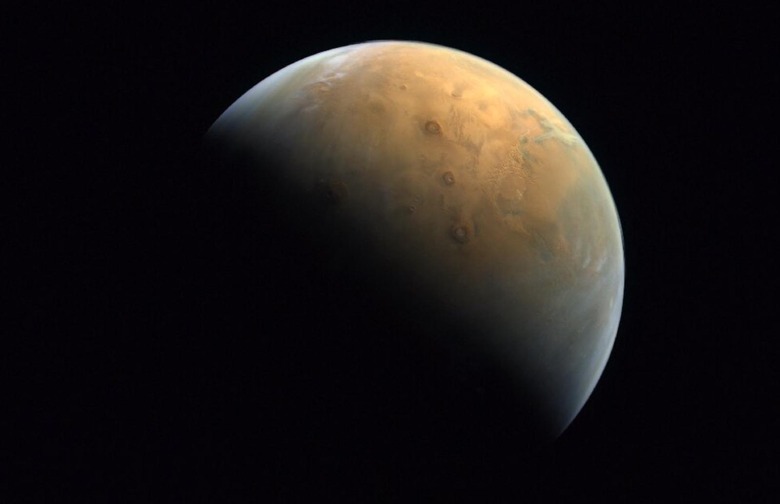Mars Is Still Losing Water
When you look at Mars today it's hard to even imagine it having water. It's dry and dusty, with exposed rock covering the crater-scarred surface. It's an interesting planet for many reasons, but it's kind of like a burnt-out Earth with a thin atmosphere and very little chance of supporting life. In the past, things were probably a lot different, and scientists believe that Mars once had a lot of water. In fact, it's believed that the planet was once completely covered by an ocean, and some of that water still exists today.
Mars has a whole bunch of water frozen as ice near its poles and elsewhere. As the seasons change on the Red Planet, storms whip up the dust and dirt and, as researchers just revealed, water, carrying it to the atmosphere where it is eventually lost. The work was published in the Journal of Geophysical Research: Planets.
The European Space Agency published an article explaining how the findings were achieved using the instruments built into the Mars Express orbiter. The spacecraft is adept at detecting the various components of the Martian atmosphere, and it was able to show how water appears and then disappears as the seasons shift and storms kick up material that was resting on the surface.
The most recent large dust storm on Mars claimed the life of NASA's Opportunity rover. Starting in one area of the planet, the storm eventually grew to cover the entire sphere in a cloud of debris. It was thick enough that it blocked out the Sun, cutting off the rover's solar power source and essentially freezing it to death. When the storm passed, the rover refused to wake back up and NASA officially declared it dead several months later.
Storms like that one can essentially siphon water vapor into the atmosphere where it is at risk of being stripped away from the planet entirely. The solar wind — an outflow of particles from the Sun that can strip the atmosphere of a planet away if it's not protected by a strong magnetic field — is largely to blame for the water loss that the planet has experienced over the past few billion years, and that's still the case today.
"A significant amount must have once existed on the planet to explain the water-created features we see," Jean-Yves Chaufray, lead author of a study examining the escape rate of hydrogen on Mars, published in Icarus, said in a statement. "As it hasn't all been lost to space, our results suggest that either this water has moved underground, or that water escape rates were far higher in the past."
As we learn more and more about the history of water on Mars we may be able to determine exactly how comfortable the planet would have been for life. We haven't found evidence of past life on the Red Planet yet, but that doesn't mean it didn't exist.
